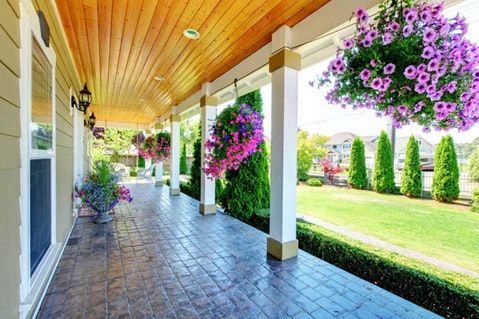Flood Insurance
We’ll shop and help you save on your Florida Flood insurance.
Flood Insurance
🌊 Flood Insurance Florida: What Jacksonville Homeowners Need to Know
Flood insurance in Florida is more than a smart idea—it’s a necessity. If you live in Jacksonville or anywhere along the Florida coast, you know how unpredictable storms and flooding can be. What many people don’t realize is that standard homeowners insurance doesn’t cover flood damage. That’s where flood insurance steps in to protect your home, belongings, and peace of mind.
Whether you're buying a home, reviewing your current coverage, or simply want to understand your risk, we’re here to walk you through everything you need to know about flood insurance in Florida—especially your options here in Jacksonville.
✅ Get a Free Florida Flood Insurance Quote Today
Whether you need NFIP, private flood insurance, or just want to understand your risk, we’re here to help. As an independent agency based in Jacksonville, we shop multiple carriers to find the best solution for your home.
🏛️ What Is Flood Insurance and Why Do I Need It?
Flood insurance protects your home and belongings from damage caused by rising ground water from heavy rain, hurricanes, tropical storms, or overflowing lakes and rivers. In 1968, the government created the National Flood Insurance Program (NFIP) to offer federally backed flood policies to homeowners, renters, and business owners.
📌 Why Jacksonville Homeowners Need Flood Insurance
Many homeowners don’t realize that standard home insurance doesn’t cover flood damage. Even worse, just one inch of floodwater can cause over $20,000 in repairs. And surprisingly, 20% of all flood claims come from properties in low-risk flood zones.
- All of Florida is in a Flood zone. Some are high risk zones.
- There is no such thing as a “No Risk” flood zone in Florida.
🔍 NFIP vs. Private Flood Insurance: Key Differences
Florida homeowners have two main choices when it comes to flood insurance: a policy from the federally backed National Flood Insurance Program (NFIP) or a policy from a private flood insurance company. While both offer important protection, they differ in terms of coverage, flexibility, and cost.
🏢 1. NFIP (National Flood Insurance Program)
NFIP policies are administered by FEMA and follow a standardized structure. The maximum building coverage under an NFIP policy is $250,000, with up to $100,000 in contents coverage. Pricing is regulated and based on federal flood maps. One key limitation is that NFIP policies do not include loss of use coverage, which means no reimbursement for temporary housing. Additionally, each structure on a property must have its own separate policy, so detached garages, guest homes, or sheds are not automatically covered under the main policy.
🏠 2. Private Flood Insurance
Private flood insurance is offered by independent insurance carriers and often provides more robust coverage than the NFIP. Many private policies allow for building limits above $250,000 and may include loss of use coverage, helping to cover temporary living expenses if your home becomes uninhabitable. Some private policies also offer limited protection for pools, landscaping, or other outdoor features. Pricing is not federally standardized, so it varies by company and is often competitive—especially for homes outside high-risk zones. Private flood insurance can also be used as excess coverage to supplement an NFIP policy if you need higher limits.
📊 Side-by-Side Comparison of NFIP vs Private Flood Insurance
| Feature | NFIP | Private Flood Insurance |
|---|---|---|
| Backed by | FEMA (Government) | Private Insurance Companies |
| Max Building Coverage | $250,000 | Up to $1M+ (varies by provider) |
| Contents Coverage | Up to $100,000 | Higher limits available |
| Loss of Use Coverage | ❌ Not Included | ✅ May Be Included |
| Pools / Landscaping | ❌ Not Covered | ✅ Sometimes Covered |
| Policy Cost | Standardized by FEMA | Varies by home, zone, and carrier |
| Waiting Period | 30 Days | Often 7–14 Days |
| Where to Buy | Through an agent | Through an agent |
🏠 Am I Required to Carry Flood Insurance?
If your home is located in a high-risk flood zone and you have a mortgage, your lender will require you to carry flood insurance. But even if you live in a moderate- or low-risk area, flood coverage is still a wise investment. In fact, over 20% of all flood claims come from properties outside of high-risk zones. That’s why we recommend flood insurance for most Florida homeowners—especially in coastal areas like Naples, Fort Myers, Jacksonville, Duval County, Jacksonville Beach and other coastal areas.
💡 What Does Flood Insurance in Florida Cover?
Flood insurance helps protect your home and belongings from costly water damage caused by rising water levels, storm surge from hurricanes, or heavy rainfall. Here's what it typically covers—and what it doesn't:
✔️ NFIP Building Property Coverage
This portion of the policy helps cover damage to the physical structure of your home, including:
- Foundation and structural elements
- Electrical and plumbing systems
- Central A/C, water heaters, and built-in appliances
- Permanent flooring
✔️ Contents Coverage
Contents coverage reimburses you for personal belongings damaged by floodwater, such as:
- Furniture, clothing, and electronics
- Portable dishwashers and window A/C units
- Washers, dryers, and other household appliances
🚫 What’s Not Covered
Flood insurance does have exclusions you should be aware of. It typically does not cover:
- Landscaping, fences, pools, pool equipment, and decks
- Temporary living expenses or alternative housing (unless covered under a private policy)
- Detached structures—unless they’re covered by a separate flood policy
💲 How Much Flood Insurance Do I Need?
You should insure your home for the cost to rebuild, not the market value. The NFIP caps building coverage at $250,000, so if your home costs more than that to rebuild, you’ll want to consider a private flood insurance policy for higher limits or excess coverage on top of your NFIP policy.
💵 How Much Does Flood Insurance Cost in Florida?
Your premium depends on:
- Your flood zone designation
- The amount of coverage
- The elevation of your home (an Elevation Certificate may help)
- Whether it’s your primary residence
📖 Read: How Much Does Flood Insurance in Florida Cost?
🌊 Does Flood Insurance Cover Storm Surge from Hurricanes?
Yes — flood insurance covers damage caused by storm surge, which is the abnormal rise of water generated by a hurricane or tropical storm. This type of flooding can devastate coastal communities like Jacksonville, Ponte Vedra, and Jacksonville Beach, even if the storm doesn't make direct landfall.
It’s important to understand that storm surge is considered flooding—and not wind-driven rain or wind damage. That means your homeowners' insurance policy will not cover it. To be protected from storm surge, you must carry a flood insurance policy through either the NFIP or a private flood insurer.
Homeowners often assume that if the storm was a hurricane, their home insurance will cover everything. Unfortunately, that’s not the case when it comes to rising water. Only flood insurance steps in to help when water enters your home due to storm surge.
🌪️ What If I Have Both Wind and Flood Damage After a Hurricane?
It’s common in Florida for hurricane damage to involve both flooding from storm surge and wind damage like roof leaks, broken windows, or structural issues. But here’s the important part:
- Flood insurance and homeowners insurance are two separate policies.
- Flood damage is covered only by your flood insurance—typically from rising water, storm surge, or overflowing bodies of water.
- Wind damage is covered by your homeowners insurance—including damage caused by flying debris, wind-driven rain, or roof damage that allows water in.
When both occur, insurance adjusters will often look at the water line inside your home:
- If damage occurred below the water line, it’s considered flood-related.
- If damage occurred above the water line (like rain coming in through a broken window or roof), that’s usually covered under your homeowners policy.
Pro Tip: Take clear photos and videos of damage right away, especially showing where the water line ends. This helps both adjusters determine which policy applies and speeds up the claims process.
Need help navigating flood vs. wind claims? Our local team is here to guide you through it.
🚱 Is a Broken Pipe in My Wall Considered Flooding?
No. Damage from a broken pipe inside your home is not considered a flood by insurance companies. Instead, it's typically covered under your the water damage portion of your standard homeowners insurance policy—assuming the break was sudden and accidental, and not caused by neglect or long-term issues like corrosion or mold.
Flood insurance specifically covers rising water that enters your home from outside, such as water from storm surge, heavy rainfall, or overflowing lakes, rivers, or canals. A burst pipe, leaking appliance, or plumbing failure doesn't meet the definition of a flood—even if the damage is extensive.
That’s why it’s important to have both homeowners and flood insurance—they protect against very different types of water damage.
🗺️ What Is a Flood Zone?
Flood zones are geographic areas defined by FEMA that reflect the level of flood risk for a property. These zones are used by insurance companies and mortgage lenders to determine flood insurance requirements and pricing.
Here are the most common flood zones in Florida:
- Zone X: Areas of minimal flood risk. Lenders do not require flood insurance, but we still recommend it.
- Zone A or AE: Areas with a high risk of flooding. If you have a mortgage, your lender will typically require flood insurance.
- Zone VE: Coastal high-risk areas that face additional danger from storm surge and wave action. These areas have the strictest building and insurance requirements.
Want to know your flood risk for your home or property in Florida? 🌐 Use this FEMA tool: Know Your Flood Risk
📏 Do I Need an Elevation Certificate?
If your property is in a high-risk zone and you're applying for NFIP coverage, an Elevation Certificate can potentially lower your rate.
📖 Learn more about elevation certificates here: What Is a Flood Insurance Elevation Certificate?
🔧 How Do Flood Insurance Claims Work?
When you file a flood insurance claim, the payout depends on your policy type and the kind of property insured. The NFIP (National Flood Insurance Program) uses two main methods:
- Replacement Cost Value (RCV): This pays the cost to repair or replace your home without depreciation. It only applies to primary residences that are insured for at least 80% of the home's replacement cost or up to the NFIP's $250,000 limit—whichever is less.
- Actual Cash Value (ACV): This pays the depreciated value of the damaged items or structure. It typically applies to personal property and non-primary residences.
💳 Can I Make Payments on My Policy?
The NFIP does not offer payment plans, but there are still a couple of ways to handle the cost:
- You can pay the full premium using a credit card.
- Your mortgage company may escrow the premium into your monthly mortgage payment—but only if flood insurance is required by the lender (typically in high-risk flood zones).
⏳ Don’t Wait—There’s a 30-Day Waiting Period
NFIP flood insurance comes with a 30-day waiting period from the date of purchase before your coverage takes effect. That means if a storm is already on the radar, it’s too late to buy a policy and be protected.
Private flood insurance may offer shorter waiting periods—sometimes as little as 7 to 14 days—but not all carriers do. Don’t wait until hurricane season is in full swing to get coverage. Plan ahead and secure your policy before floodwaters are a threat.
🚨 What About FEMA Disaster Assistance?
Here’s what most people don’t realize: Relying on FEMA after a flood is not a substitute for insurance. FEMA’s disaster assistance is limited and intended to help you survive, butnot fully recover.
- FEMA grants are capped at $42,500 (as of 2024), but the average payout is only $5,000–$7,000.
- This small amount is meant to cover temporary needs like basic repairs or short-term housing—not to rebuild your home or replace everything you lost.
- Most FEMA assistance comes in the form of loans—which means you’ll have to pay it back with interest. And this will be on top of your normal mortgage payment.
- Flood insurance pays out actual claims and doesn’t need to be repaid.
🔗 Source: FloodSmart.gov
Whether you’re in Riverside, San Marco, or Jacksonville Beach, flood insurance is a key part of protecting your home from Florida’s rising water risks. Our local agents are here to help you find the right policy for your needs.

 Get a
Get a 


